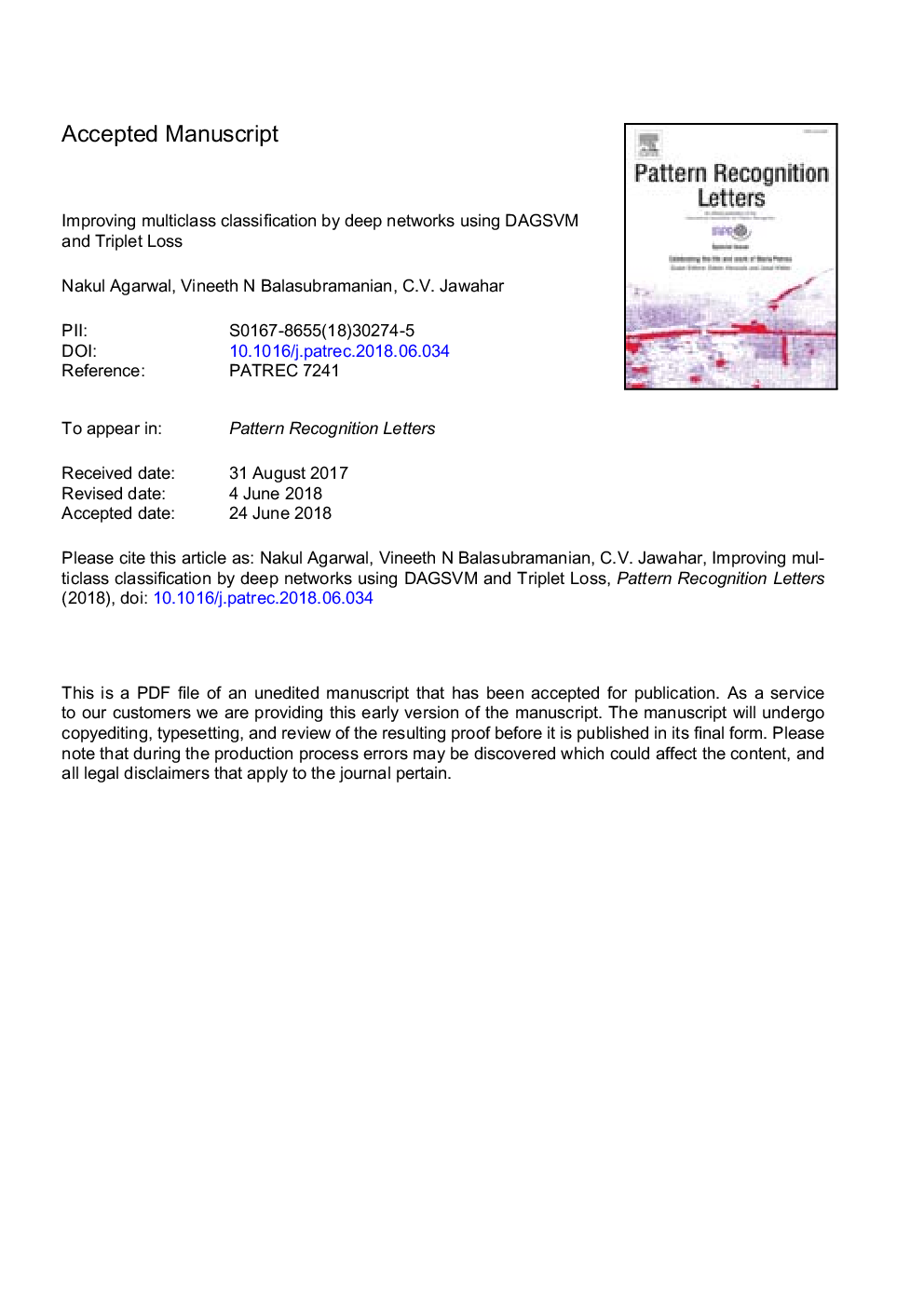| Article ID | Journal | Published Year | Pages | File Type |
|---|---|---|---|---|
| 6940138 | Pattern Recognition Letters | 2018 | 9 Pages |
Abstract
With recent advances in the field of computer vision and especially deep learning, many fully connected and convolutional neural networks have been trained to achieve state-of-the-art performance on a wide variety of tasks such as speech recognition, image classification and natural language processing. For classification tasks however, most of these deep learning models employ the softmax activation function for prediction and minimize cross-entropy loss. In contrast, we demonstrate a consistent advantage by replacing the softmax layer by a set of binary SVM classifiers organized in a tree or DAG (Directed Acyclic Graph) structure. The idea is to not treat the multiclass classification problem as a whole but to break it down into smaller binary problems where each classifier acts as an expert by focusing on differentiating between only two classes and thus improves the overall accuracy. Furthermore, by arranging the classifiers in a DAG structure, we later also show how it is possible to further improve the performance of the binary classifiers by learning more discriminative features through the same deep network. We validated the proposed methodology on two benchmark datasets, and the results corroborated our claim.
Related Topics
Physical Sciences and Engineering
Computer Science
Computer Vision and Pattern Recognition
Authors
Nakul Agarwal, Vineeth N Balasubramanian, C.V. Jawahar,
